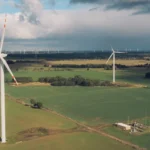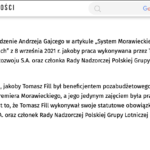Revision of the Electricity Market Regulation should set out a clear level playing field to make the market competitive, consumer-oriented, flexible and technology-neutral. European electricity markets currently face structural challenges to security of supply due to the missing capacity and missing money problems, while new generating investments are insufficient to bridge the gap. The latest package of the European Commission’s decisions approving the new capacity mechanisms in six Member States (Belgium, France, Germany, Greece, Italy and Poland) proves that well-designed capacity mechanisms play an increasing role in strengthening the market reforms and ensure security of supply at the same time.
Today’s ITRE voting result introduces double standards for capacity mechanisms and undermines acquired rights and predictability of investments. The proposed emissions standards for strategic reserves would allow operation of the most carbon-intensive plants. We are convinced that all capacity mechanisms should be treated equally in order to provide the market participants with a level playing field.
All capacity mechanisms need to provide investors with predictability in the long-term perspective
A number of capacity mechanisms implemented in several Member States prove the importance of the role they play in ensuring security of supply in the European Union. The European Commission decisions of 7 February 2018 on approving the new capacity mechanisms in six Member States, after an in-depth assessment, demonstrate this fact. Unfortunately, today’s ITRE position proposes limiting the capacity mechanisms to a maximum of only 5 years and shortening the capacity agreements to a maximum of 1 year. Such a short period of time is insufficient to provide the necessary incentives to build new capacities and flexible generation units – investors need a minimum predictability – in general, support schemes are approved by the Commission for a 10-year period.
Double standards in terms of Emission Performance Standards (EPS) – not a fair solution
PKEE finds it disappointing that the measures set out to address resource adequacy concerns are placed in a different regulatory regime. Today’s ITRE report creates several regulatory privileges designed for strategic reserves, while discriminating the capacity markets. Especially, it raises serious doubts as to why the more market-oriented and technologically-neutral measures like capacity markets would be bound by more rigid changes limiting carbon intensity of power generation, while existing strategic reserves would remain outside the scope of the EPS 550gr CO2/kWh standard. Instead of the EPS550, the EP ITRE Committee proposes to set up a specific CO2 limit dedicated only to the strategic reserves. The proposed limit of 200 kg CO2/kW for the strategic reserves will allow operation of the most polluting plants that use coal and lignite.
Changing the rules during the investment process is not a way to ensure security of supply in Europe
Under the capacity mechanism rules proposed by the EP ITRE committee, the EPS550 standard would become directly applicable to the new build generating units and would deprive the currently advanced projects of any form of support coming from the capacity mechanisms. This would possibly undermine the acquired rights of investors and recent Commission notification decisions with regard to capacity mechanisms, which provide utilities with the much needed regulatory predictability to ensure power supply.
Strategic reserve more costly for consumers than the capacity mechanisms
It is surprising why the EP ITRE Committee gives regulatory preference to the strategic reserve, while the reserve generates higher cost for consumers than the capacity market based on competitive rules (see: in-depth studies of Compass-Lexecon for the PKEE)). At the same time, studies show that the EPS 550 standard will have a marginal impact on CO2 emissions, as the reductions in the power sector will be offset by other EU ETS sectors. Unfortunately, this voting outcome clearly sets up double standards for EU Member States and market participants.
PKEE








